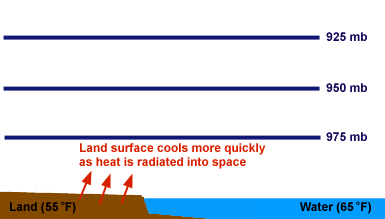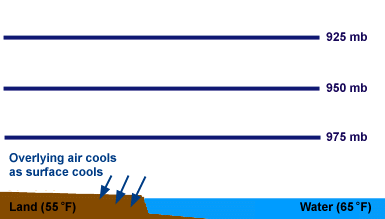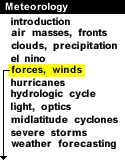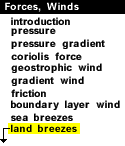
|
On clear, calm evenings, temperature differences between a body of water and neighboring land produce a cool wind that blows offshore. This wind is called a "land breeze". Land breezes are strongest along the immediate coastline but weaken considerably further inland.

Land-breeze circulations can occur at any time of year, but are most common during the fall and winter seasons when water temperatures are still fairly warm and nights are cool.

On clear and calm evenings, the earth's surface cools by radiating (giving off) heat back into space, and this results in a cooling of the immediately overlying air.

Since the air over land cools more rapidly than the air over water, a temperature difference is established, with cooler air present over land and relatively warmer air located over water.

Sea Breezes |
|

onshore flow aloft |




